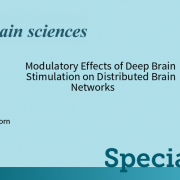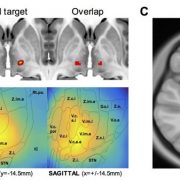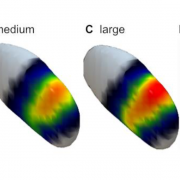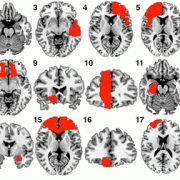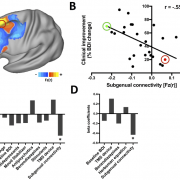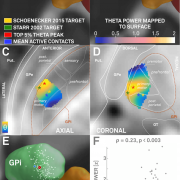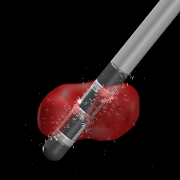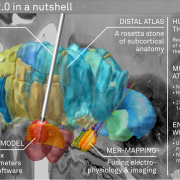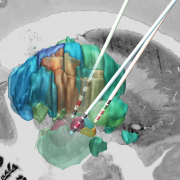Lesion Network Mapping for Parkinsonism and Tremor relief
/0 Comments/in Uncategorized/by andreashornLead-DBS updates in 2018
/0 Comments/in Uncategorized/by andreashornby our group &
New PNAS Study on Lesion induced criminal behavior
/0 Comments/in Uncategorized/by andreashornWe just published a new study spearheaded by R. Ryan Darby that used the Lesion Network Mapping approach developed by Michael Fox to analyse lesion induced criminal behavior.
The study has been featured on multiple news outlets such as WSFA, Der Spiegel, The Independent and El País.
Findings show that lesions leading to criminal behavior are connected to a common brain network. This criminality-associated connectivity pattern was unique compared with lesions causing four other neuropsychiatric syndromes.
Explaining TMS treatment response in depression by means of functional connectivity
/0 Comments/in Uncategorized/by andreashornElectrophysiological Atlas of GPi Activity (Neumann 2017) included in Lead-DBS v2.0.0.6
/0 Comments/in Uncategorized/by andreashornInside a new version of Lead-DBS (v2.0.0.6) released yesterday, we included the pallidal theta activity sweet spot defined in A localized pallidal physiomarker in cervical dystonia as well as optimal stimulation targets defined in Thomas Schönecker‘s Article Postoperative MRI localisation of electrodes and clinical ef… and Philip Starr’s Article Microelectrode-guided implantation of deep brain stimulators….
We further included the CIT168 subcortical atlas defined in A High-Resolution Probabilistic In Vivo Atlas of Human Subco… that Wolfgang Pauli and colleagues from Caltech graciously shared for inclusion in Lead-DBS.



New SEM study out: “Relating pallidal theta activity to dystonic symptoms and anatomy of the GPi”
/0 Comments/in Uncategorized/by andreashorn
VTA-model support for segmented Leads
/0 Comments/in Uncategorized/by andreashornTill Dembek created a segmented Lead Mesh that allows us to run our FEM-calculations (see Connectivity Predicts deep brain stimulation outcome in Park…; model implemented based on SimBio with great help from Johannes Vorwerk) to create VTAs for these electrodes.


Lead-DBS 2.0 out now
/0 Comments/in Uncategorized/by andreashorn- DISTAL atlas: A detailed brain atlas of the human subcortex based on histology (graciously provided by M. Mallar Chakravarty and Louis Collins), MRI and structural connectivity. It is available in three different nomenclatures, thus serving as a rosetta stone for thalamic nomenclatures (See Siobhan Ewert‘s
; for a summary see here [http://www.lead-dbs.org/?page_id=2911]).
- FEM-based VTA model (beta): To model the physical effects of DBS in the brain, we teamed up with Johannes Vorwerk (SimBio/FieldTrip toolboxes) and Qianqian Fang (Iso2Mesh toolbox). Further help was provided by Ningfei Li (integration inside Lead-DBS), Robert Oostenveld (Initial counseling and help with FieldTrip-related code). This is the first open-source pipeline to model volumes of tissue activated (VTA) as a one-step solution (see Connectivity Predicts deep brain stimulation outcome in Park…and this page [http://www.lead-dbs.org/?page_id=3291] for details).
- Human Motor Thalamus Atlas: Graciously provided by Igor & Kristy Ilinsky, the human motor thalamus settles controversies about motor projections in the human thalamus. It is based on specialized histological stains and was precisely co-registered to ICBM 2009b space. For more information about the dataset, see [http://www.humanmotorthalamus.com].
- PaCER: A fully automated method to precisely reconstruct DBS electrode localizations based on postoperative CT data will soon be published by Andreas Husch (Hertel group, Luxembourg) and was graciously provided to Lead-DBS. For more information about PaCER, see [https://adhusch.github.io/PaCER/].
- MER-Mapping: Ari Kappel (Richardson lab, Pittsburgh) and Chadwick Boulay (Sachs lab, Ottawa) created an intuitive and precise tool to combine DBS reconstructions with microelectrode recordings within Lead-DBS.
- Multiple novel atlases: In total, Lead-DBS now comes with 23 subcortical atlases [http://www.lead-dbs.org/?page_id=45] and 14 whole-brain parcellations [http://www.lead-dbs.org/?page_id=1004] suited for connectomics.
- Enhanced workflows: We re-designed large parts of the registration pipeline. For normalization strategies, all SPM routines, ANTs, FSL’s FNIRT and a MaGET-brain like procedure are available directly in Matlab (and without the need to install anything else).

DISTAL Atlas methods summary, data out soon
/0 Comments/in Uncategorized/by andreashorn

